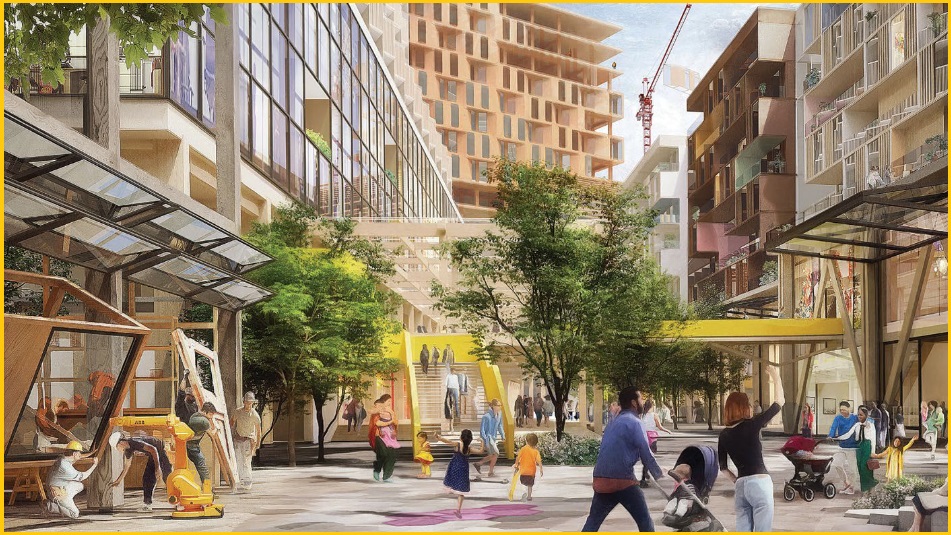In 2019, a new development in Canada’s largest city was meant to be the first major incursion for Google’s smart cities spin-off Sidewalk Labs.
Toronto’s Waterfront was set to be the merge of technology with civic design – including large swathes of public consultation – to make “the most innovative place in the world that can set a new standard for urban life in the 21st century,” as then-CEO of Sidewalk Labs Dan Doctoroff said in the foreword to its development proposal.
The plans included futuristic features like heated footpaths that monitored weather forecasts and turned on in advance of a cold snap, deliberately integrating (as-yet non-existent) fleets of self-driving ride-share vehicles, and a “digital building code system” to enforce flexible zoning laws like volume levels.
Underpinning all 1,500 pages of Sidewalk’s proposal was the kind of immense data collection and analysis regime you would expect from Google.
A year after it submitted the proposal, and using the pandemic as convenient cover, Sidewalk pulled its submission citing “economic uncertainty”.
Two years later the people of Toronto got a new vision for the development, one focused more on trees – the plans include a “two-acre forested green space” and “significant urban farm” on the rooftops – than data collection.
Dr Ian Oppermann, NSW Chief Data Scientist and Australian Computer Society (ACS) Immediate Past President, is a proponent of smart cities.
He told Information Age projects like Sidewalk can be “too far, too fast” for many people.
“People have been coming to grips with increasing use of data for personalisation of services,” he said.
“They’re starting to ask questions around how much data is being collected, what else is happening to that data, and how much control have they got over its use.”
In a recent article for the MIT Technology Review, Karrie Jacobs said “arrogance” was a common descriptor for how people close to the Toronto project saw Sidewalk Labs’s attitude.
“There was a hubris to the way that they thought that they could solve all the problems in-house,” said Alex Ryan of the MaRS Discovery District innovation hub.

The new development plan places a greater emphasis on nature than digital technology. Image: Waterfront Toronto
Google’s Sidewalk Labs proposed 10 launch applications that would feed directly into the development area’s ubiquitous sensors.
Services included monitoring “public realm assets” like park benches and drinking fountains for “proactive maintenance” as well as scanners that keep track of things like ambient lighting and occupancy levels for automated energy management in homes and businesses.
It was a step too far for a community that wanted a liveable, modern space within walking distance from their city.
“What is the vision that inspires people to want to live here, to work here, to raise their families and children and grandchildren here,” MaRS Discovery District CEO Yung Wu rhetorically asked the MIT Technology Review.
“It’s not a smart city. It’s a city that’s smart.”
But Dr Oppermann remains optimistic that the 21st century will be filled with data and AI for enhancing liveability in a way that doesn’t just line the pockets of Silicon Valley tech giants.
“It is inevitable,” he told Information Age. “In NSW we will take a deliberate but cautious view toward an increasing use of data and AI.
“As we do, we will continue to demonstrate that we know what we're doing, that we've got the capability to do it, and that it actually delivers benefit to the people of NSW.
“The reason we do this is to avoid the problem [Sidewalk had] in Canada.”










